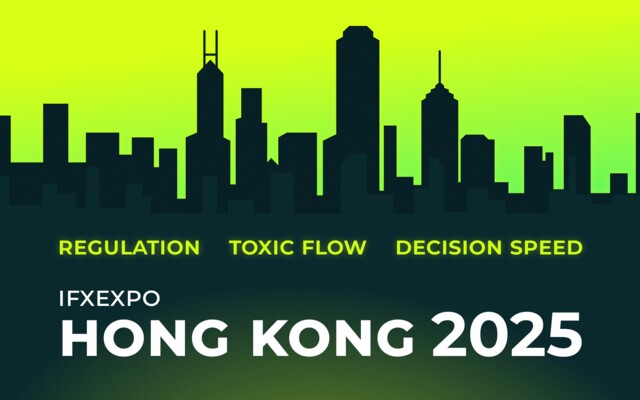Hong Kong made one thing obvious: regulation now impacts profitability more than volatility. Toxic flow is getting smarter, and the real edge is shifting from execution speed to decision speed.
Below are the questions brokers asked us most—and the answers that matter for 2026.
1) Regulation is getting harder. How do we stay profitable?
What’s really happening
Multiple jurisdictions, faster audits, and rising expectations of explainability. Brokers open or relocate entities for flexibility—but complexity increases.
Why this matters
- Fragmented policies cause inconsistent decisions and hidden exposure.
- Regulators and clients expect the reason behind each action.
What to do
- Centralize risk & compliance; standardize logic, vary parameters per entity.
- Keep human-readable logs: trigger → rule → decision → timestamp.
- Run quarterly audit simulations for explainability checks.
2) Toxic flow is quieter now—how do we catch it?
What’s really happening
Less “loud” latency arb; more context-aware behavior: order-in-gap entries, silence exploitation, asymmetric slippage, coordinated accounts.
Why this matters
- PnL spikes are lagging—damage is often done already.
- “Clean” singles can form a toxic cluster without entity-level aggregation.
What to do
- Use behavior triggers (gap, silence, cancel/replace) with adaptive thresholds.
- Aggregate by IP/CID/device/entity; escalate when accounts act as one.
3) Is hybrid routing the new default?
What’s really happening
Yes. Situational routing beats static A/B. Symbols, depth, and trader profiles decide where flow goes in real time.
Why this matters
- Static rules leak profit as market regimes change.
- LP relationships improve when routing is explainable and telemetry-backed.
What to do
- Define policies: A-book at spread ≤ X & depth ≥ Y; internalize otherwise; hedge if account alpha > Z over N trades.
- Review edge cases weekly: negative-edge symbols, hot hours, recurring LP rejects.
4) Swap-free and bonuses bring clients—how do we avoid losses?
What’s really happening
Promotions attract traders but create financial exposure. Volatility plus LP widening can turn a campaign into a profit drain.
Why this matters
- Blanket swap-free invites financing arbitrage.
- Bonuses trigger multi-account abuse without entity-level controls.
What to do
- Make promos “smart”: symbol-/time-/segment-based with risk budgets and auto cut-offs.
- Stress-test promo exposure weekly against volatility and LP spreads.
5) “Speed matters”—what does that mean in practice?
What’s really happening
Not server latency—time-to-change. Leaders launch, adjust, or revoke policies today, not next sprint.
Why this matters
- Slow deployment costs weeks of profit.
- Risk teams tied to developers lose agility.
What to do
- Move configuration out of code; let risk own policies directly.
- Automate routine; escalate only exceptions; track time-to-change as a KPI.
Looking ahead: the 2026 broker playbook
- Multi-entity → one risk/compliance brain, variable parameters.
- Static A/B → situational routing with explainable logic.
- PnL alerts → behavior triggers with adaptive thresholds.
- Promos as marketing → promos as risk with budgets and sunset rules.
- Latency edge → decision-speed edge.
Where Brokerpilot fits (briefly)
- Behavior-level toxic flow detection (gap, silence, asymmetry).
- Entity-level aggregation (account/IP/device) to reveal clusters.
- Policy-based A/B/Hybrid routing with audit-ready explanations.
- Automated margin, leverage, swap-free and bonus controls.
- Dashboards for price, execution and liquidity health; fast configuration without developers.
We don’t just monitor risk—we operationalize it.
Call to action
Book a session with our risk team. Implement policy-based, real-time, explainable risk—the approach leading brokers use to stay profitable under regulation and volatility.

